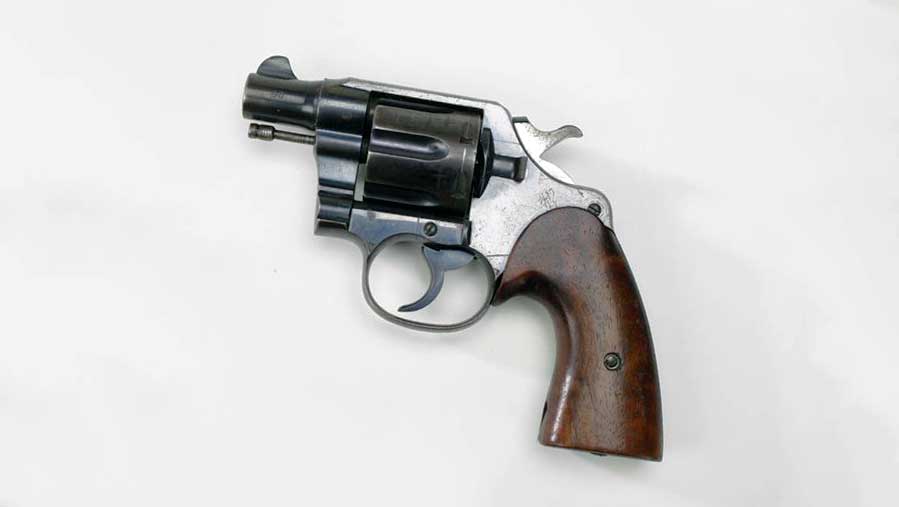
The Colt New Service revolver pictured above resides in the NRA National Firearms Museum located in Fairfax, VA.
Revolvers have long been my preference in handguns, though over time I’ve become quite fond of semi-auto pistols, the 1911 being at the top of that list. I’ve been shooting revolvers since I was a tyke, and have fooled around with just about every model under the stars. Modern revolvers have come a long way, and I’m fond of virtually all of them, but classic double-actions still cause me to grin the most. This is true for any number of models, but I have a special place for the Colt New Service revolver.
Colt has a long history with double-action revolvers starting with the Model 1877—AKA Lightning or Thunderer specimens. The company progressed from these relatively delicate models through the years, including the 1878, the Model 1889 Navy, the Army and Marine models, Army Special, Official Police and variants of all the above, of which there were several. These revolvers were medium in build and chambered for .38 S&W, .38 Special or .41 Long Colt, depending on the model. Some were offered in .22 caliber.
Shooters and the military were dissatisfied with the .38-caliber revolvers, as they spat a 150-grain lead bullet at less than 800 fps. Unfortunately, the U.S. military experienced a number of casualties in the Philippines due to the lack of stopping power of this round.
Responding to complaints, Colt went to work on a heavy-frame revolver in the late 1880s, and in 1898 introduced its biggest double-action yet—the Colt New Service. This heavy revolver has been available in hard-hitting pistol calibers, including the .38 Long and Short, .38 Special, .357 Mag., .38-40, .38-44, .38 S&W Special, .44-40, .44 Smoothbore, .44 Special, .44 Russian, .44 S&W Special, .45 ACP, .45 Auto Rim, .45 Smoothbore, .45 Colt, .450 Eley, .455 Eley and .476 Eley. A long list, indeed.
Around 1909, Colt made some improvement to the revolver’s internal mechanism, prompting the U.S. military to adopt it as a primary sidearm. The New Service revolver became extremely popular in the military and saw widespread use in both WWI and WWII. It was also popular with law enforcement agencies, something akin to the present day Glock in status. It also was wildly popular with the public. Shooters and outdoorsmen flocked to the New Service for many reasons, including its reliability and the fact it was available in so many popular calibers.
Many years ago, when I was a rookie New Mexico State Police officer, I was stationed in Lincoln County, NM. That would be the same Lincoln County famous for its range war back in the 1800s. It really hadn’t changed much at the time I worked there. I had the good fortune of working with many fine deputies assigned to the Lincoln County Sheriff’s Department and got to know several of them quite well. They were, for the majority, tough, hard working people with good law-enforcement sense.
I became well-acquainted with a particular deputy, a very large man who was one of those tough, old lawmen. Through working together on several capers and spending some time in the coffee shop, as cops occasionally do, I learned that he was a firearm enthusiast. Many of the other lawmen in the area made a lot of sport of this man because of his choice of sidearm. Other deputies and officers around carried modern revolvers and some semi-auto pistols.
This fellow’s choice was a Colt New Service revolver chambered in .45 Colt. The next time I heard someone make fun of the .45-carrying deputy, I replied that I believed he was a well-armed man.
I would like to sport a pile of New Service revolvers in my own modest collection, yet I only have one. It’s a 5.5-inch, blued model chambered in .44-40, one of my favorite old calibers. The gun is in great shape, though it sports some honest wear, which can be expecting from a revolver made in 1916. The revolver shoots great and is a pleasure to fire.
With more than 356,000 New Service revolvers in various configurations manufactured, it was one of the most successful firearms Colt ever produced. And rightly so.




































